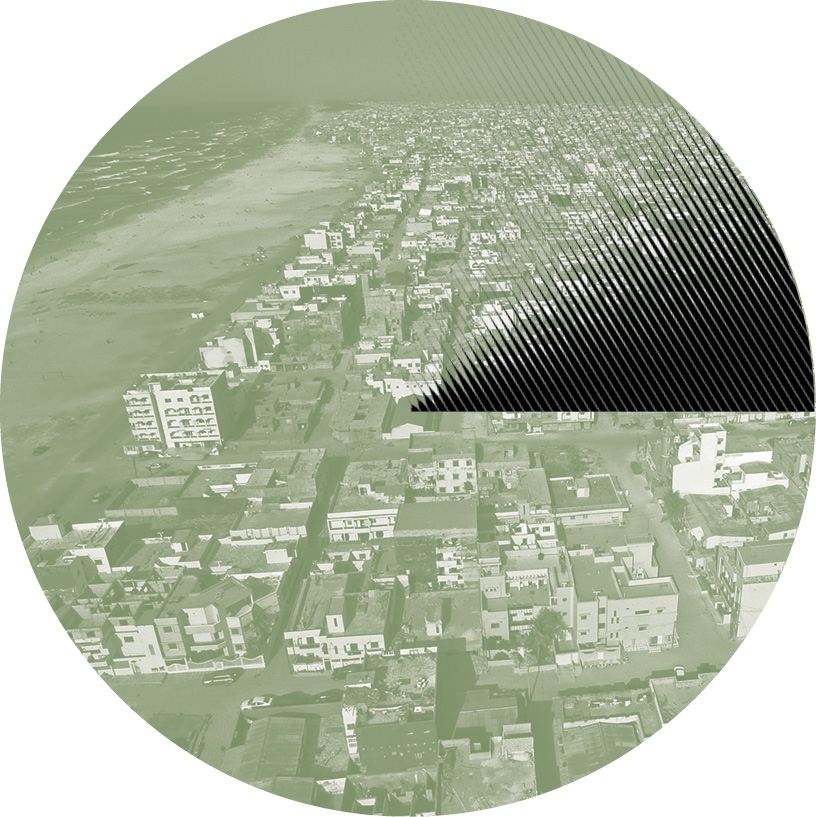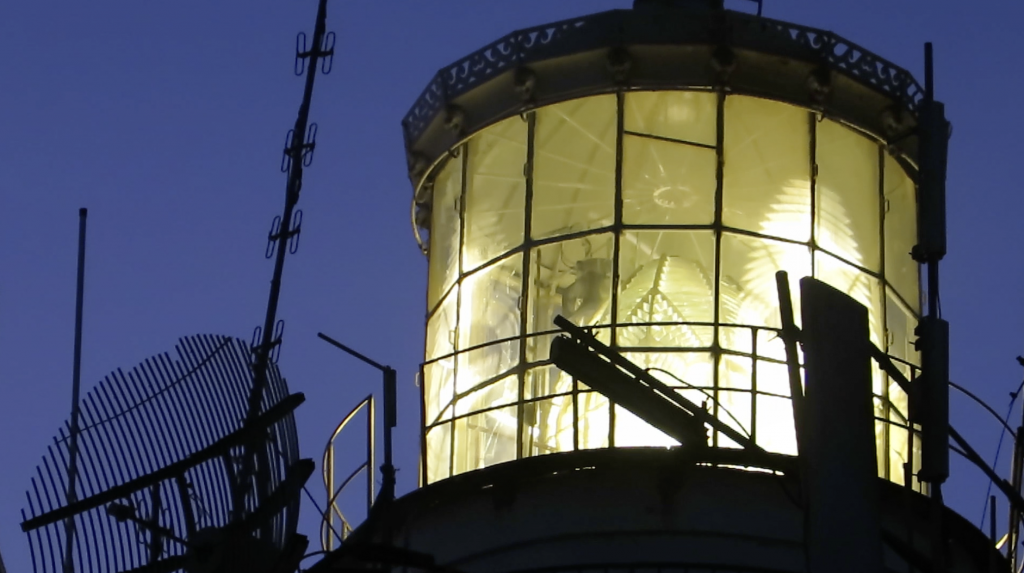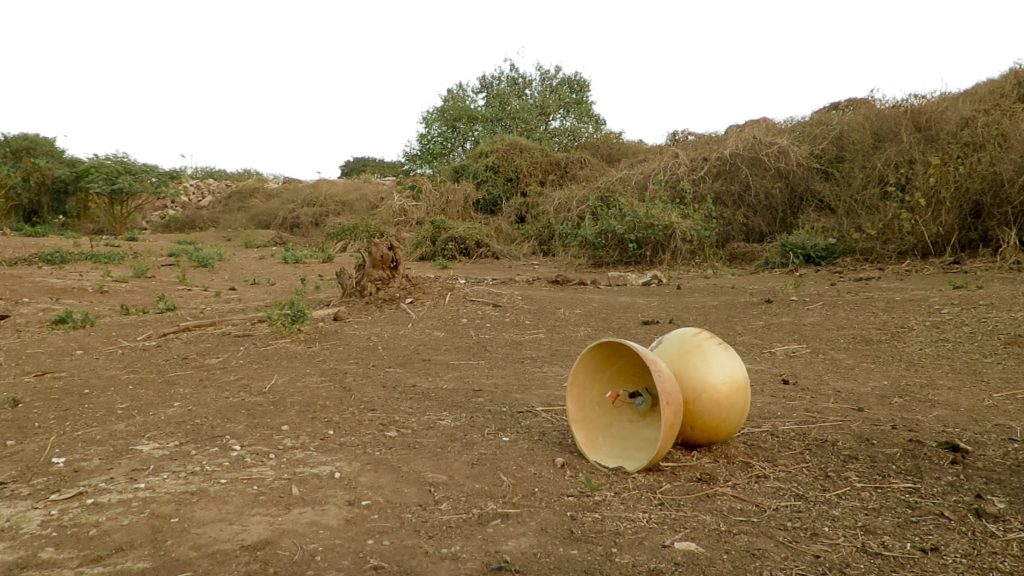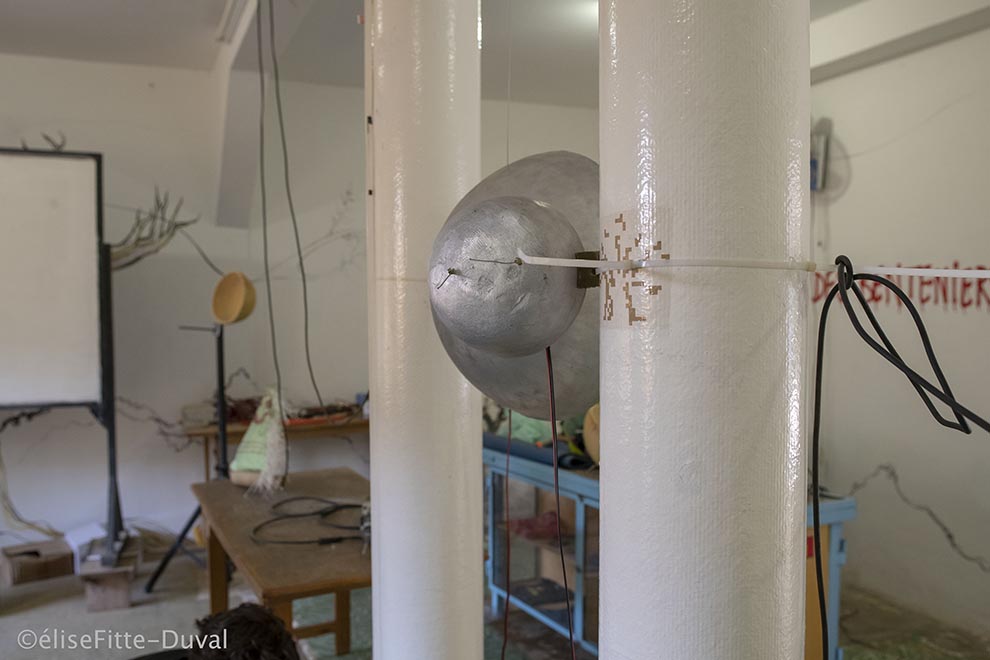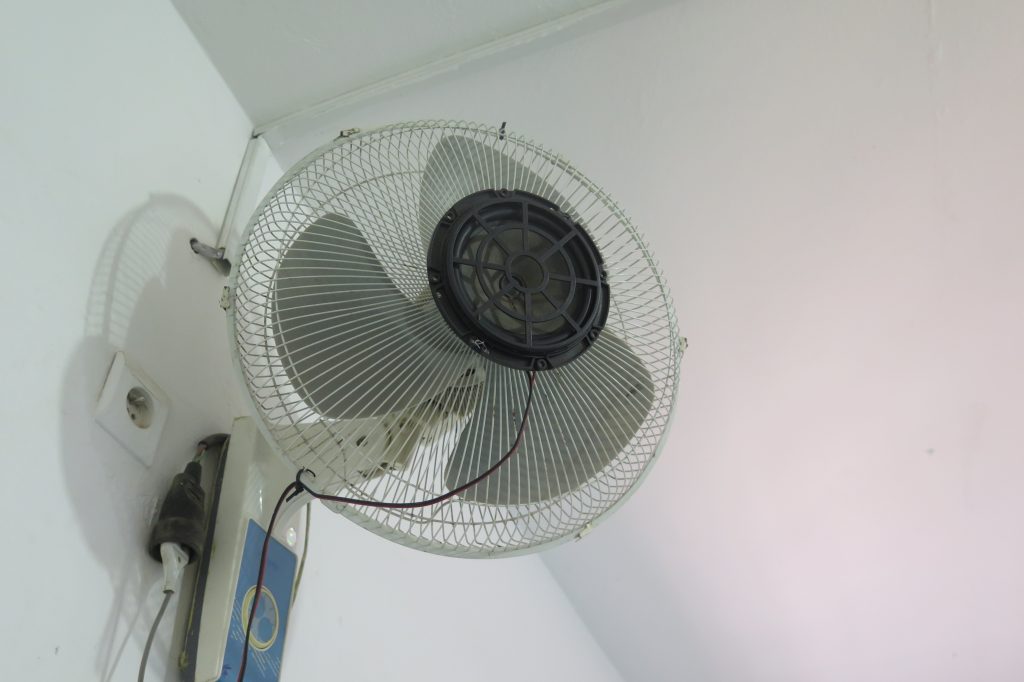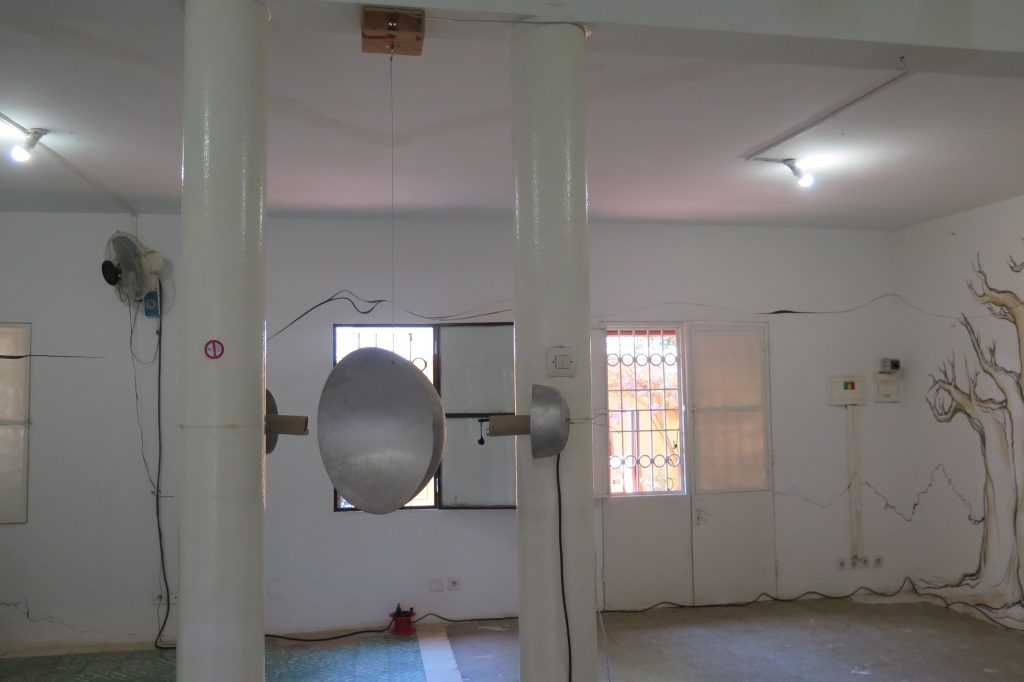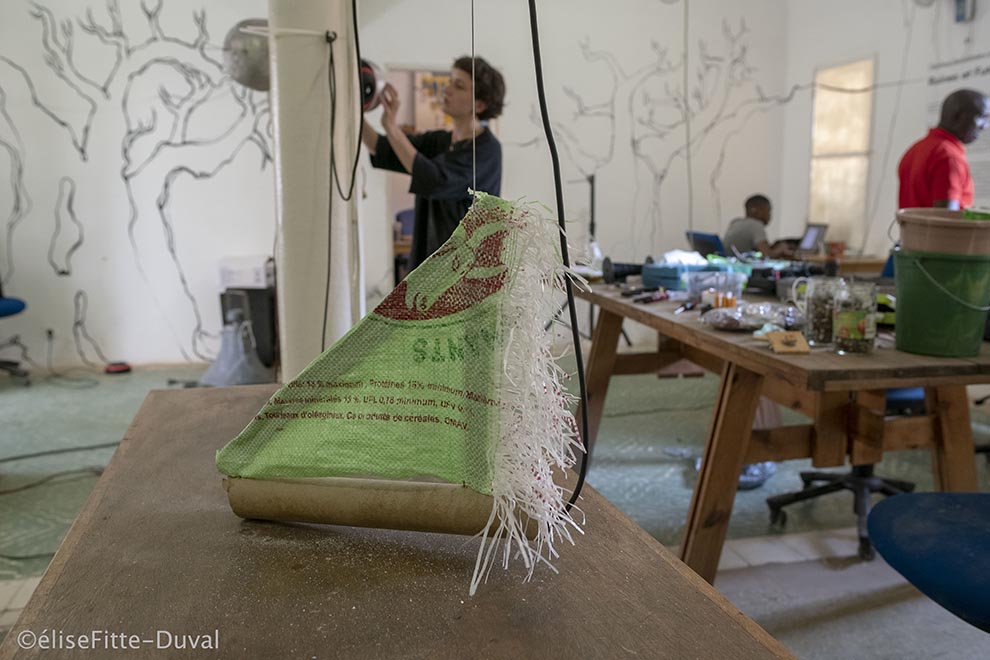Residency Experience
During the residency project “sonic explorers” in Dakar, we, collectively as a group and individually, engaged with the encountered soundscapes of the districts and the island “Ile de Ngor” located in the north of the city.
During the first week, I identified three different types of sound compositions that I recorded and focused upon individually. First, known sounds found in a different context, for example, electrical tool noises in the midst of streets filled with cars, people and horses. Secondly, unknown sounds in known/comparable contexts, such as exotic birds or religious chants interfering with the subtle sounds of plain interiors. Thirdly, excessively loaded soundscapes composed of an extremely diverse range of sound sources. These three categories helped me navigate through the first stages of my research. Since I had been in Dakar a couple of times before, I was familiar with the different districts and areas of the city. During my stay, however, I discovered specific locations that caught my attention more intensively. I revisited these locations several times to experience them at different times of the day. For instance, the roundabout “jet d’eau Sicap”, close to our residence, and the lighthouse “Les Mamelles” became especially interesting to me. I recorded, filmed and observed these environments and thereby focused on “travelling” sounds and circular movement in particular. With “travelling” sounds I am describing the sounds that are scattered, reflected and reappear in different locations of the same environment repeatedly. My main focus was dedicated to the effect of quickly changing and sequenced sound sources. How these affect our spatial perception and our ability to find our bearings within the given architectural structures of a city.
The roundabout “jet d’eau Sicap” and its surrounding buildings were part of the urbanisation projects carried out in the late 1950s. The buildings stand in a semi-circular shape around one side of the roundabout. The buildings are divided equally by passages leading from one side to the other. These passages build an acoustic and visual connection between the inner core of the roundabout,which is a non-active fountain, and the neighbourhood’s playgrounds behind the walls of the building units. I was interested in how the sounds caused by the circulating traffic were reflected differently depending on the architectural givens of the place on each side of the “Sicap” buildings.
Further, I researched the movement and sound dynamics of the traffic on markets and other public places to see how different “movement acts”, such as cars, horses and pedestrians, interact and create unpredictable movement and sound dynamics. More specifically, I analysed the non-linearity of the individual moving units. I decided to create my own electronic moving device that I then integrated into the existing traffic circumstances, to see how the other units react or incorporate its movement. In doing so, I scrutinised the flexibility of urban movement dynamics that produce multi-layered sound compositions.
With the other participants, Adramé, Karima and Martin, we organised trips within and outside the city. Every morning we held a brief meeting where we discussed our progress, plans for the following days and suggestions for excursions. In the evenings, we discussed conceptual or technical aspects of our research and work development.
We visited a textile factory, the island “Île de Ngor”, a market for metals, gallery spaces, crafting workshops and specific districts of the city. Through Adramé, I learned about local rituals, religious chants and living conditions around Senegal. We discussed together with Martin the effect of known and unknown noises and the significance of their environmental and cultural context. For example, that the sounds we grew up with have a strong effect on our perception when experienced in a different context, or contrarily become less relevant on a conscious level.
I joined Karima for one of her interviews at the neighbouring technical school. Together we experimented with the result of her recordings in the garden at Kër Thiossane. We tried different set-ups to find an engaging way to display the recorded material.
Together we concluded our stay with an open studio at Kër Thiossane and a newspaper publication, featuring elements of our research, such as texts, photos and sketches.
“Calebasses”
The soundscapes of Dakar are vibrant, multi-layered and unpredictable. During the residency, silence, or an environment of little noise,was unimaginable or to put it mildly: a seemingly unattainable state. My idea and concept of quietude were in need of reinterpretation. Subsequently, it became apparent that my contribution in research and work would not consist of adding more sounds to the found circumstances. Instead, I anticipated integrating objects that function as a type of sound reflection tool, or movement systems that enhance the inaudible aspects of the existing soundscapes. With that in mind, I started to collect different types of containers, to experiment with their sound-reflection abilities in- and outdoors.
First, I chose the multipurpose fruit of Senegal: the calabash. The calabash (in French, “calebasse”), cut in halves, serves as a bowl for water transportation and food preparation, but it is also used as a musical instrument and plays a role during spiritual ceremonies. Its irregular external form became an interesting element for sound and autonomous movement experimentation. Through its spherical shape it provides a great isolating surface to reflect induced sounds or multidirectional sound fields.
By analysing the traffic and shifting sound dynamics of markets and other public spaces, I decided to create a performative moving unit, built of two calabash-halves. This moving object was then placed in the midst of the encountered traffic situation of Dakar. The calabashes are joined back to back by a battery-powered motor and move autonomously from one side to the other to find their way on the pavement and soils. Occasionally, pedestrians stopped and watched, while others ignored and passed by. It became a spontaneous intervention that showed a somewhat familiar object exhibiting an unknown and unpredictable movement. The sounds of the environment are merged with the buzzing noise of the motor and the crunching sound of sand and stones under the rolling “calebasses”. This intervention allowed me to record and film the different traffic dynamics of the city. The calabash performance was shown in the form of a video at the open studios.
Further, my focus lay upon cyclic phenomena and shifting soundscapes. To this ends, I visited the roundabout “jet d’eau Sicap” and the lighthouse “Les Mamelles”. Both locations were characterised by distinctive varying sounds that were put into context by either a visual or an auditory cyclic event. Back in the workroom, I installed an aluminium frying pan that rotated vertically between two columns and thereby reflected the sounds of the interior space from one end to the other. Because of its irregular shape and thickness, the cast and carved aluminium pan provided a unique resonating body. Two microphones were placed on each side of the room. Their signals are played through two speakers directed closely towards the centre of the aluminium bowl. A mix of reverberations and the influence of different induced frequencies created a constantly changing sound piece. The sounds that enter the aluminium bowl are redirected through its rotating movement. In the process, the reverberation shifts repeatedly, leaving behind a rhythm that harmonises with the rotating movement of the bowl.
I adjusted the elements of the composition and experimented with different components. During the residency, the installation transformed constantly ultimately leading to a myriad of compositions. These compositions included amplified sounds of the surrounding environment, the aluminium bowl’s own resonance excited through a bouncing peanut attached to one column and the buzzing sound of two fans installed on each side of the room. I identified the sounds of fans as a reoccurring element of the background noise of my recordings. The subtle rattle of the metal grid and the propellers became a trope for the somewhat more quiet encountered interior spaces of Dakar.
Subsequently, I used this aspect in the final set-up of my installation. Two Arduinos were programmed to signal on/off phases for the two fans and the motor responsible for the aluminium bowl’s rotation. The two speakers that were previously facing the aluminium bowl were attached to the front part of each fan. During “on” sequences, the fans turned slowly from one side to the other to then suddenly stop at a certain point of their movement to face a specific area of the room. The sounds produced by the resonating aluminium pan and the wind stream directed from each fan of the opposite sides of the room are captured by two microphones facing the centre of the rotating pan. The low bass frequencies of the signals are played, with a short delay, by the attached speakers,causing the fans to rattle. An interior sound organism established itself, consisting of the existing sounds of the space that are being reorganised through an integrated sequenced movement system composed of two fans and a frying pan. During the residency “sonic explorers” in Dakar, I anticipated learning how to approach the encountered sounds playfully with little prejudice regarding their context.

